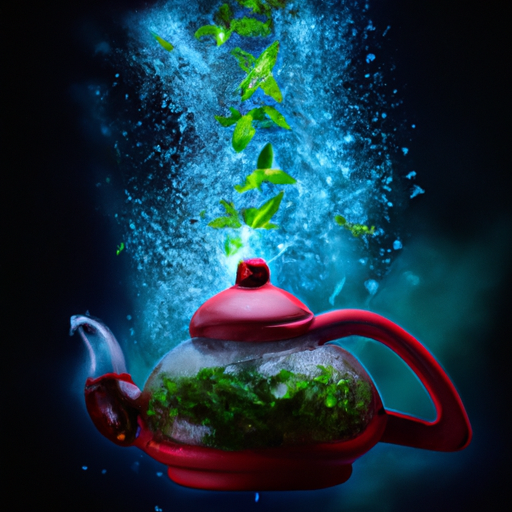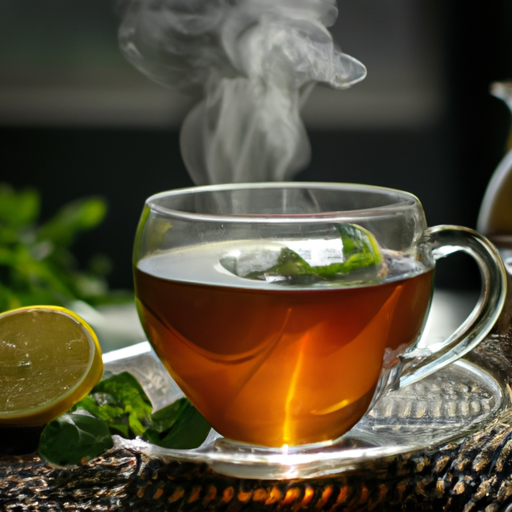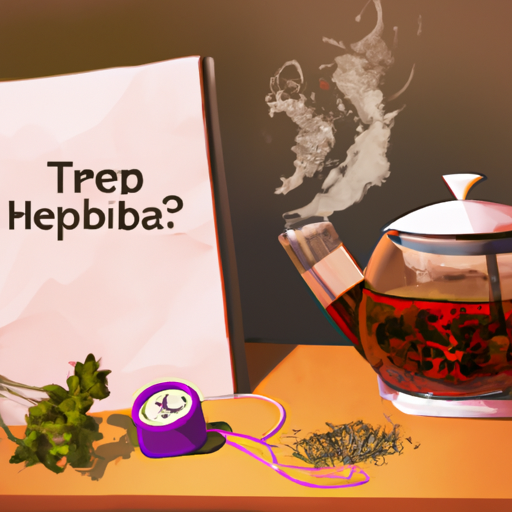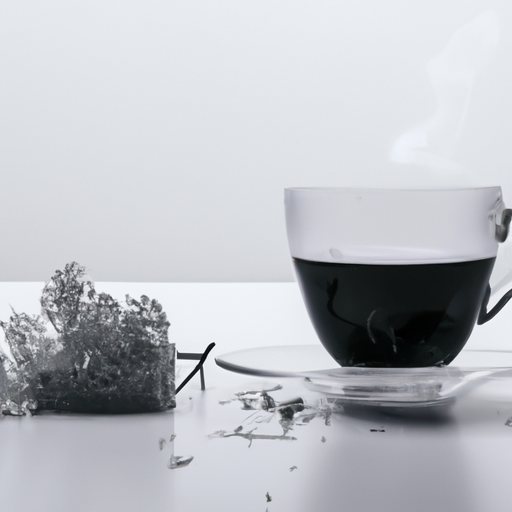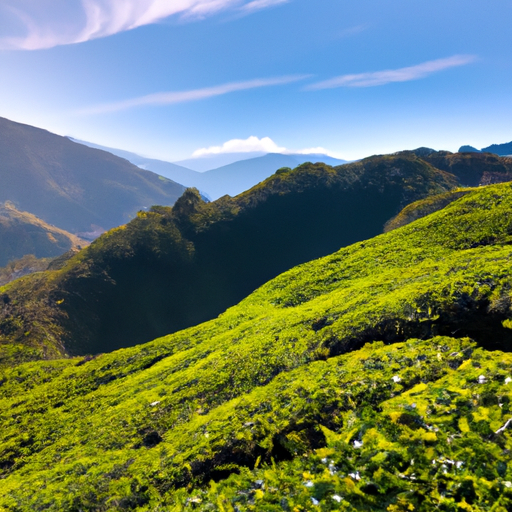As I sit here, enjoying a hot cup of tulsi green tea, I am reminded of the healing properties of natural remedies. The delightful scent and comforting warmth of this herbal remedy bring me to a place of calmness and health.
But there’s more to brewing the perfect cup of tulsi green tea than simply adding hot water. Temperature plays a crucial role in extracting the full spectrum of flavors and benefits from these delicate leaves.
To truly unlock the potential of tulsi green tea, it is essential to understand the importance of temperature. The right balance between heat and time can make all the difference in maximizing the health benefits and taste of this herbal elixir.
In this article, we will explore the recommended temperature for boiling tulsi green tea and the optimal steeping time to achieve a cup of perfection.
So, join me on this journey as we delve into the art of brewing tulsi green tea, and discover how to enhance its taste with natural additions. Let’s unlock the full potential of this herbal supplement and embrace the holistic benefits it has to offer.
Key Takeaways
- The recommended temperature for boiling tulsi green tea is 176-185°F (80-85°C).
- Brewing at the right temperature helps retain the vital nutrients and antioxidants in tulsi green tea.
- Steeping tulsi green tea at excessively high temperatures can result in a bitter taste.
- The recommended steeping time for tulsi green tea is 3-5 minutes.
The Benefits of Tulsi Green Tea
Let’s explore the amazing benefits of sipping on a cup of Tulsi Green Tea. Tulsi, also known as holy basil, has been used for centuries in Ayurvedic medicine for its numerous health benefits.
One of the best times to drink Tulsi Green Tea is in the morning, as it can provide a gentle boost of energy without the jitters that coffee can sometimes cause. Not only does Tulsi Green Tea have a delicious taste, but it also contains powerful antioxidants that can help protect our bodies from harmful free radicals.
One of the key benefits of Tulsi Green Tea is its ability to help with stress relief. The unique combination of Tulsi and Green Tea creates a calming effect on the body, helping to reduce feelings of anxiety and promote relaxation. The adaptogenic properties of Tulsi further enhance its stress-relieving effects by helping the body adapt to stressors more effectively.
Understanding the importance of temperature when brewing Tulsi Green Tea is crucial to ensure maximum benefits. It’s recommended to boil the water to a temperature of 176-185°F (80-85°C) before steeping the tea for 3-5 minutes. This temperature allows for the extraction of the beneficial compounds in Tulsi while preserving its delicate flavors.
In the next section, we’ll delve deeper into the topic of understanding the importance of temperature when brewing Tulsi Green Tea.
Understanding the Importance of Temperature
To really appreciate the perfect cup of this soothing beverage, it’s essential to understand just how crucial getting the water temperature right is. Temperature variations can have a significant impact on the flavor of tulsi green tea.
When the water is too hot, it can result in a bitter taste and overpower the delicate herbal notes of the tea. On the other hand, if the water is not hot enough, the flavors may not be fully extracted, leaving you with a weak and lackluster brew.
The ideal water temperature for boiling tulsi green tea is around 175 to 185 degrees Fahrenheit (79 to 85 degrees Celsius). This temperature range allows the leaves to release their aromatic compounds and flavors without scorching them. It strikes a perfect balance between extracting the full essence of the tea while maintaining a smooth and enjoyable taste.
By steeping tulsi green tea at the recommended temperature, you can ensure that you experience its full range of health benefits and enjoy its soothing properties. So, next time you brew a cup of tulsi green tea, remember to pay attention to the water temperature. It’s a small but essential step in creating a truly satisfying tea-drinking experience.
Recommended Temperature for Boiling Tulsi Green Tea
Make sure you heat the water for your cup of tulsi green tea to the recommended range of 175 to 185 degrees Fahrenheit to fully unlock its delightful flavors and health benefits. The temperature at which you brew your tea plays a crucial role in determining the taste and effectiveness of the herbal supplement.
Here are four reasons why the recommended water temperature is essential:
-
Preserves Nutrients: Brewing tulsi green tea at the right temperature helps retain its vital nutrients, including antioxidants and polyphenols, which are known for their health-promoting properties.
-
Enhances Flavor: The optimal temperature allows the tea leaves to release their natural oils and compounds, resulting in a rich and aromatic cup of tea that’s both soothing and refreshing.
-
Prevents Bitterness: Steeping tulsi green tea at excessively high temperatures can lead to a bitter taste due to the release of tannins. Sticking to the recommended range ensures a balanced and enjoyable flavor profile.
-
Supports Health Benefits: The correct water temperature maximizes the extraction of beneficial compounds from the tea leaves, such as adaptogens and phytochemicals, which contribute to various health benefits.
Now that you know the importance of water temperature, let’s explore the next aspect of brewing tulsi green tea: the recommended steeping time for maximum flavor.
Steeping Time for Maximum Flavor
Steeping your cup of tulsi green tea for the recommended amount of time is like allowing a delicate flower to bloom, revealing its full depth of flavor and aroma. To achieve the perfect cup, it is essential to understand the brewing techniques and how they affect the flavor profiles of this herbal supplement.
One factor that greatly influences the taste of your tea is the steeping time. The longer you steep tulsi green tea, the stronger and more pronounced the flavor becomes. However, steeping for too long can result in a bitter taste. On the other hand, if you don’t steep it long enough, the flavor may be weak and lack complexity.
To help you navigate the optimal steeping time, refer to the table below:
| Steeping Time | Flavor Intensity |
|---|---|
| 2 minutes | Mild |
| 3 minutes | Balanced |
| 4 minutes | Robust |
By following these guidelines, you can tailor the flavor intensity of your tulsi green tea to your preference. Experiment with different steeping times to find your perfect balance.
Transitioning into the next section, let’s explore some tips for brewing the perfect cup of tulsi green tea.
Tips for Brewing the Perfect Cup of Tulsi Green Tea
Mastering the art of brewing the ideal cup of tulsi green tea involves incorporating a few expert tips that elevate the experience to new heights. To ensure the perfect cup, it’s important to pay attention to brewing techniques and the recommended brewing time.
Here are three key tips to help you brew the perfect cup of tulsi green tea:
-
Water temperature: Start by heating the water to around 175°F (79°C). This temperature is ideal for tulsi green tea as it allows the flavors to infuse without making the tea bitter.
-
Steeping time: For optimum flavor, steep the tea for 3 to 5 minutes. This allows the natural herbal properties of tulsi green tea to fully develop, resulting in a rich and aromatic cup.
-
Quality tea leaves: Always choose high-quality tulsi green tea leaves for the best flavor. Look for leaves that are vibrant and fresh, as they’ll provide a more satisfying brew.
By following these expert tips, you can create a cup of tulsi green tea that’s bursting with flavor and goodness. Once you’ve mastered the brewing process, you can move on to enhancing the taste with natural additions.
Enhancing the Taste with Natural Additions
To enhance the taste of your cup of tulsi green tea, you can easily add natural ingredients like honey or lemon, which studies have shown can increase the antioxidant properties of the tea. Natural flavorings not only add a delightful twist to your tea, but they also provide additional health benefits. Honey, for example, is known for its antibacterial properties and can help soothe a sore throat or cough. Lemon, on the other hand, adds a refreshing citrus flavor and is rich in vitamin C, which boosts the immune system.
Here is a visual representation of some natural flavorings you can add to your tulsi green tea:
| Natural Flavorings | Benefits |
|---|---|
| Honey | Antibacterial properties, soothing for sore throat |
| Lemon | Refreshing citrus flavor, rich in vitamin C |
| Cinnamon | Adds a warm, comforting taste, aids digestion |
| Ginger | Spicy flavor, aids digestion, boosts immunity |
| Mint | Refreshing, cooling taste, improves digestion |
In addition to natural flavorings, there are alternative brewing methods that you can explore to further enhance your tulsi green tea experience. For example, you can try cold brewing the tea by steeping it in cold water overnight, which results in a smoother and less bitter taste. Another option is to experiment with different steeping times and temperatures to find the perfect balance of flavors. By incorporating these natural additions and alternative brewing methods, you can truly elevate your tulsi green tea experience and enjoy the health benefits it has to offer.
Enjoying the Health Benefits of Tulsi Green Tea
Indulge in the incredible wellness advantages of sipping on a steaming cup of this invigorating herbal elixir. Tulsi green tea isn’t just a tasty beverage but also a powerful source of antioxidants that can boost your overall health. Here are four ways to maximize the benefits of tulsi green tea and incorporate it into your daily routine:
-
Start your day with a cup of tulsi green tea: This herbal supplement can provide a refreshing start to your mornings. Brew it at a temperature of around 175°F (80°C) to preserve its delicate flavors and beneficial compounds.
-
Take it as a mid-day pick-me-up: Instead of reaching for a sugary energy drink, opt for tulsi green tea. Its natural caffeine content can give you a gentle energy boost without the crash later on.
-
Replace your evening drink with tulsi green tea: Swap your regular evening beverage with a calming cup of tulsi green tea. It can help you relax and unwind after a long day, thanks to its stress-reducing properties.
-
Experiment with tulsi green tea recipes: Get creative by incorporating tulsi green tea into smoothies, iced teas, or even cocktails. This way, you can enjoy its health benefits while exploring new flavors.
Incorporating tulsi green tea into your daily routine can be a simple and enjoyable way to enhance your overall well-being. So go ahead and savor the goodness of this herbal elixir.
Frequently Asked Questions
Can I use cold water to brew tulsi green tea instead of boiling it?
Sure, you can definitely use cold water to brew tulsi green tea. It’s an alternative method that offers a refreshing twist. By steeping it in cold water, you can unlock its herbal goodness without the need for boiling.
What happens if I exceed the recommended boiling temperature for tulsi green tea?
Exceeding the recommended boiling temperature for tulsi green tea can have detrimental effects. High temperatures can lead to the release of bitter compounds, loss of delicate flavors, and potential damage to beneficial compounds, resulting in a less enjoyable and less nutritious tea.
How does the steeping time affect the taste and health benefits of tulsi green tea?
The steeping time of tulsi green tea directly impacts its taste and health benefits. Longer steeping times can result in a stronger flavor, while shorter steeping times may preserve more of the tea’s health-promoting compounds.
Are there any specific types of water that should be used for brewing tulsi green tea?
Oh, the joys of brewing tulsi green tea! Let me enlighten you about the wonders of using specific types of water. From filtered to mineral, each kind offers unique benefits that enhance the taste and overall experience of this herbal elixir.
Can I reuse the tulsi green tea leaves for a second or third infusion?
Yes, you can reuse tulsi green tea leaves for multiple infusions. This practice not only helps to reduce waste but also allows you to enjoy the health benefits of tulsi throughout the day.
Conclusion
In conclusion, brewing the perfect cup of Tulsi Green Tea isn’t just a delicious experience, but it’s also a way to reap its numerous health benefits. By understanding the importance of temperature and steeping time, we can unlock the maximum flavor and goodness of this herbal supplement.
Remember, patience’s a virtue when it comes to brewing tea, so take your time and let the flavors infuse. As the saying goes, "Good things come to those who wait," and this couldn’t be truer when it comes to enjoying the holistic benefits of Tulsi Green Tea.

